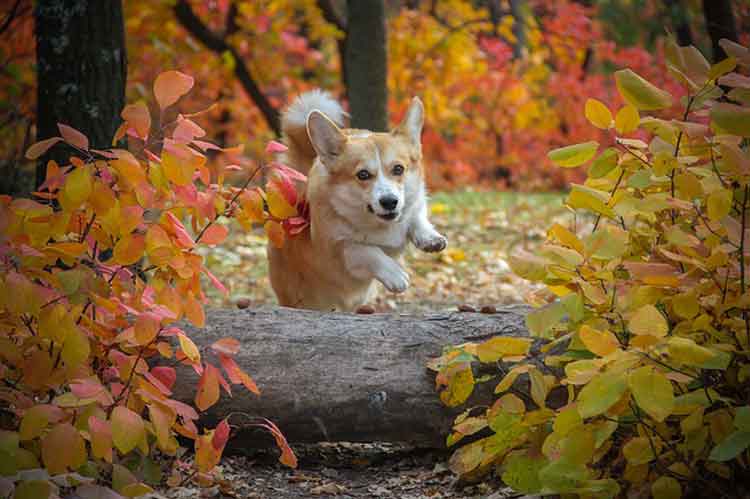Table of Contents
How to Play with Your Dog and Teach Them
People who have pets at home and want to make them the center of attention are constantly on the lookout for new dog tricks. Teaching adorable puppies and show dogs, on the other hand, isn’t just for pet entertainment; it can also entertain people, and the benefits of animal learning processes can extend far beyond simple games.
Owners who have access to a professional dressage service can instantly notice the benefits of teaching tricks to dogs; while animals may exhibit a variety of instructions and simple games without the assistance of specialists, pets become more calm, well behaved, and, above all, fun.
The earlier a dog is trained, the faster it will learn commands and rules. As a result, it is clear that the early stages of a pet’s life are ideal for introducing teaching tricks, rules, and behaviours – that by more than two months of life, four-legged friends are already able to acquire specific commands and understand them.

There are currently a number of instruments on the pet market that may considerably improve the learning process of dogs, and the clicker is one of the primary and most popular products for people who wish to educate their pets, which is becoming increasingly hot and agitated.
The clicker, which is made up of a plastic box that fits in the palm of the hand, generates a characteristic sound of two clicks when pressed, which efficiently catches the animal’s attention and provides it the perception of good behaviour and a sense of association. The ideal situation is for the owner to have a bit of the snack in addition to the equipment, so that when teaching the dog, he or she can correlate the snack’s reward with the sound of the clicker, reinforcing a thought toward the pet.
Also Read: How to Look After your Pets During Summer Season
Although professional trainers use this equipment to teach dogs tricks and commands, it is not always necessary for the animal to understand what is being presented; treats, snacks, cuddles, and stroking can all be effective ways to reward excellent animal behaviour. Learn how to make teaching your dog tricks easier and be prepared for canine entertainment programmes at your home in this article.
Teach Tricks to Dogs
As previously stated, learning dogs is much easier when the animal is still a puppy, and it is crucial to watch how much fun your pet is having with this type of activity, because he may find training to be very boring depending on his age. Elderly dogs, for example, should not be forced to perform these chores if they do not find them stimulating and enjoyable, and it is up to the pet owner to decide which commands to teach the pet.
Another key element to remember is that physical violence should never be utilised as a means of reprimanding the pet during any type of training. Animal cruelty is not only illegal, but it can also have the exact opposite effect of what it was intended to achieve: the animals will dread their owners and the learning process will take the form of chronic suffering.
Making an appointment with a veterinary specialist before beginning your dog’s training is a smart idea since, in addition to ensuring the pet’s health, the animal health practitioner can educate you on the many types and techniques of pet training. Can make helpful suggestions that will aid the pet’s learning process.
Be patient and willing to repeat the same directions and movements multiple times before your pet understands them, which is crucial because any sort of training needs a great deal of attention and dedication from both the teacher and the animal. So, if you’re an animal lover who isn’t very calm (or if your dog has a lot of trouble with concentration and comprehending), hiring a professional trainer might be your best bet.

Basic Canine Commands (How to Play With Your Dog)
It is not difficult to teach basic obedience orders to dogs, and with a little time and a lot of love, your pet will be able to learn and internalise the precise meanings of good and bad behaviour. Snacks and a desire to offer your pet lots of cuddles are the first stages in making your training quick and effective, as we indicated before.
The procedure for teaching a pet simple instructions such as sit, paw, and lie down is essentially the same; and it should be continued until the dog promptly obeys the owner’s command. The following set of instructions, for example, is effective for sitting:
- Show your pet a treat you enjoy and then place your hand behind your body, causing the breath to be initiated by the spoken order.
- Press lightly on the animal’s back when you say “sita,” signifying the activity you want it to perform.
- Reward yourself with affection and a snack once the animal has completed the task.
- Repeat the command at least five times to ensure that the animal understands what is required of it and that the pestis is replaced with as many cuddles as possible, as it believes.
Also Read: How to take Care of Your Pet
The method, which is similar to that of a clicker, can be tailored to a number of orders and tricks (such as jumping, turning, coming, going, letting go, passing between the owner’s feet, or “talking”). With or without assistance to heal and reward your pet, issue the command.
It might be a good idea to leave a tiny piece of snack on show for the dog in your palm while repeating the order “deita” to get him to lie down, for example. The animal will go insane and try to pick up the snack and then reward it while lying down, repeating the process until it understands what its lower arm equates with the word “let down.”
The more the training is repeated, the better the dog will comprehend what is expected of each instruction, and the animal will eventually heed the owner’s commands without any kind of activity being required.
Also Watch: Important Scientific Facts
Although some dogs are more easily distracted and resist directions from their owners for longer periods of time, appropriate behaviour can only be learned via repetition and rewards, which strengthens patience’s effectiveness. Training is the essential term.

5 Pointers and Explanations for Teaching Tricks to Dogs
It’s vital to remember that dog training processes follow some fundamental steps that can be customised to the transmission of various forms of information. It’s also crucial to remember that certain attitudes and behaviours can aid or hinder training. As you may see in the following list.
- Start the training procedure as soon as feasible. Animals can be trained as young as two months old, and their comprehension of what is taught is considerably faster at this age.
- Demonstrate to yourself and your pet that you are respected. When the dog tries to misbehave, don’t give him tantrums or dengue, and make it clear to him that it’s a “no.”
- Respect your pet’s boundaries, and don’t expect to teach all kinds of tricks and orders in a single day. Each animal learns at a different pace, and they should not be overworked as a result of training. This approach should take about 15 minutes and should be repeated twice a day to avoid him losing interest or linking training with negative memories.
- Don’t overindulge your pet. Animals, like children in a similar situation, do not value rewards that are given to them for no reason.
- Never train your pet through violence or aggression. This type of attitude, in addition to creating offence, can make your dog aggressive, and is indicated if the misbehavior is verbally admonished or ignored.
- Pick a moment when your dog is calm and eager to learn new tasks. In stressful or fearful situations, dogs are less likely to focus and grasp the commands you want to give them.
- The best ways to reward good pet behaviour include snacks, clickers, and caressing. As a result, make use of these tools to train it (taking care with treats, which must be given with discretion so that the animal does not become obese during learning).
